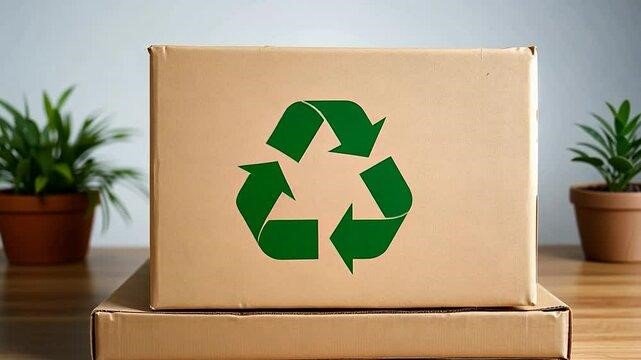Cardboard cutouts have become a popular tool for events, advertising, and personal decoration. They offer an affordable and eye-catching way to display images or messages. If you are considering ordering a cardboard cutout custom design, it’s important to also understand their environmental impact and how to recycle them responsibly. This article explores the ecological footprint of cardboard cutouts and provides practical tips on recycling to minimize waste.
What Are Cardboard Cutouts Made Of?
Most cardboard cutouts are crafted from corrugated cardboard, a material composed of a fluted sheet sandwiched between two liners. This design provides strength and durability while keeping the weight low. The cardboard is usually printed with vibrant inks to showcase images and designs clearly.
While cardboard is a biodegradable and recyclable material, the production and disposal of cardboard cutouts still have an environmental impact, especially when they are used as single-use promotional materials.
The Environmental Impact of Cardboard Cutouts
Resource Use and Carbon Footprint
The environmental impact of cardboard cutouts begins at the production stage. The raw material—wood pulp—comes from trees, meaning forestry practices and logging affect ecosystems and biodiversity. Sustainable forestry can mitigate some damage, but deforestation remains a concern when demand increases.
Manufacturing cardboard also requires energy, water, and chemicals, contributing to greenhouse gas emissions and water pollution. After production, printing inks and coatings applied to the cutouts may contain harmful chemicals, some of which can impede recycling or cause pollution.
Waste Generation
Since cardboard cutouts are often designed for short-term use—such as marketing campaigns or parties—they tend to be discarded quickly. If not recycled properly, these items contribute to landfill waste, where decomposition can release methane, a potent greenhouse gas. Additionally, coated or laminated surfaces on some cutouts may hinder biodegradation.
Transportation Emissions
Shipping cardboard cutouts, especially large or custom-sized pieces, can add to their environmental footprint. Transportation involves fossil fuel consumption and emissions that accumulate over time, particularly when items are shipped internationally or across long distances.
How to Reduce the Environmental Impact of Cardboard Cutouts
Choose Sustainable Materials and Inks
One way to lessen environmental harm is to opt for cardboard products made from recycled or sustainably sourced materials. Also, ask if eco-friendly inks, such as soy-based or water-based inks, are used during printing, as they are less toxic and easier to recycle.
Reuse When Possible
Reusing cardboard cutouts for multiple events or purposes significantly reduces waste. For instance, storing them carefully for future use or donating them to local schools, theaters, or community centers can extend their life cycle.
How to Recycle Cardboard Cutouts Properly
Recycling cardboard cutouts correctly is essential to ensuring they don’t end up in landfills. Here are some key steps to follow:
1. Remove Any Non-Cardboard Components
Before recycling, remove any plastic, foam, or metal parts attached to the cardboard cutout. These materials can contaminate the recycling process and reduce the quality of recycled paper products.
2. Check for Coatings or Laminations
Some cardboard cutouts have glossy or laminated finishes. These coatings may not be recyclable and can cause problems at recycling facilities. If your cutout has such finishes, contact your local recycling program to confirm if they accept them.
3. Flatten and Clean
Flatten the cardboard to save space and make it easier to process. Make sure the cardboard is dry and free from food stains or adhesives, as contaminants can cause entire batches to be rejected.
4. Use Local Recycling Facilities
Place the prepared cardboard in your curbside recycling bin if your community accepts it. Alternatively, take it to a recycling drop-off center. Always follow local guidelines, as recycling capabilities can vary.
5. Composting Options
If the cardboard cutout is free of inks and coatings, it may be composted in home or municipal composting programs. Cardboard breaks down into organic matter that enriches soil.
The Future of Eco-Friendly Cardboard Cutouts
Innovations in sustainable materials and recycling technologies promise to reduce the environmental footprint of cardboard cutouts even further. Some companies are experimenting with biodegradable inks and coatings, or cutting down waste through precision manufacturing methods. Consumers also have a growing role in demanding greener options and practicing responsible disposal.
By being mindful of the materials used and recycling properly, individuals and businesses can enjoy the benefits of cardboard cutouts while protecting the environment.
In conclusion, cardboard cutouts are a versatile and visually appealing medium, but they come with environmental considerations. Choosing eco-friendly options, reusing when possible, and recycling correctly can significantly reduce their ecological impact. For those looking to create a unique design, consider a cardboard cutout custom to ensure quality and sustainability go hand in hand.
If everyone takes small steps towards responsible use and disposal, the environmental footprint of cardboard cutouts can be minimized for a healthier planet.
